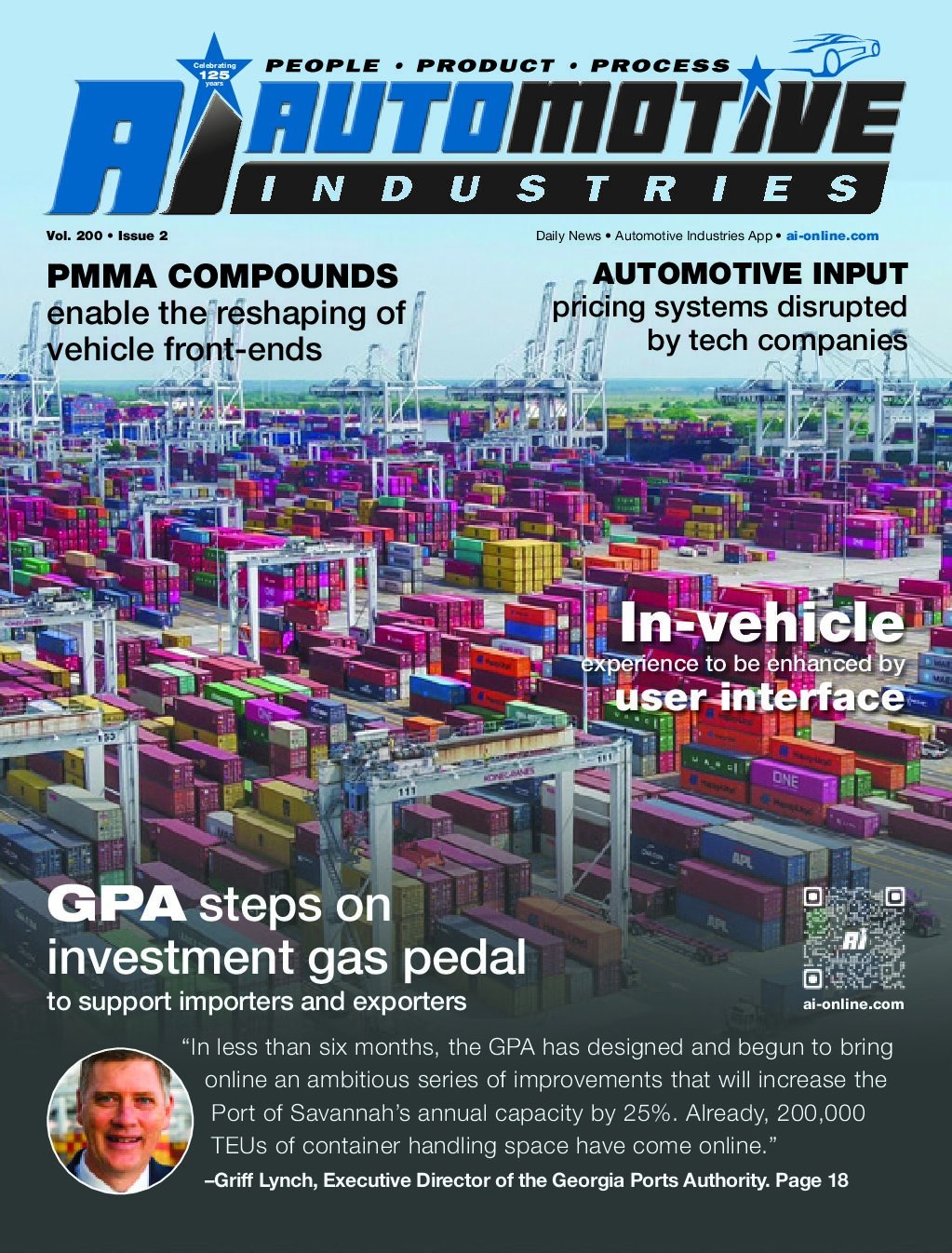
A partnership between the Georgia Ports Authority, cargo owners and logistics services providers is supporting economic growth in Georgia and surrounding states.
The ports of Savannah and New Brunswick serve manufacturers in Georgia and at least six neighboring states, which together yearly build millions of vehicles and components for the United States and ex
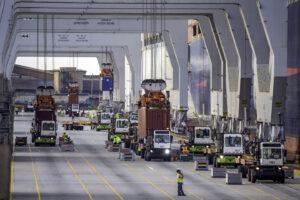
port markets.
The container port of Savannah is the fourth-largest in the United States, and in October 2021 handled over half a million containers for the first time. Capacity increased further in November with the opening of a second set of nine rail tracks for a total of 18 tracks at its Mason Mega Rail Terminal. The expansion immediately increased intermodal capacity to and from the Port of Savannah by more than 30%, according to Governor Brian P. Kemp.
The Georgia Ports Authority (GPA) partnered with its two Class I rail providers CSX and Norfolk Southern, to provide inland and off-dock locations to move long-dwell imports off out of the port terminal.
Importers and truckers also helped to reduce the congestion, by reducing dwell times and improving truck movements. The average import container dwell time was reduced to 6.2 days from 12 days between September and early December 2021.
“This is the relief we needed in order to regain terminal efficiency and speed up vessel service,” said GPA Board Chairman Joel Wooten. “By reclaiming this space on terminal, we can begin to reduce the backlog of vessels at anchor. This ground-breaking partnership between cargo owners and logistics providers should serve as a model for the entire nation as we work to address supply chain challenges.”
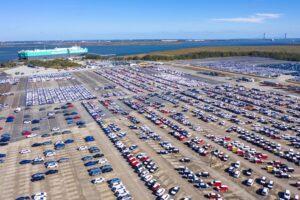
GPA has announced a Peak Capacity project, which is a phased process that is designed to create 820,000 TEUs of additional annual capacity by March 2022. Another 18 acres now under development will add 400,000 TEUs of capacity by July, for a total of 1.2 million TEUs of additional space. GPA is also building a new deep-water berth at its Garden City Terminal to accommodate 16,000-TEU vessels.
In May 2021 GPA received a federal permit from the U.S. Army Corps of Engineers to add a fourth berth for cargo ships to dock at its Colonel’s Island Terminal in it is Port of Brunswick. The project, currently in the engineering phase, will help support the expansion of auto processing onto the 400-plus acres on the south side of the island that are permitted for development.
This was after GPA renovated Berth 2 at Colonel’s Island, which formerly handled bulk cargo, to better serve Ro/Ro vessels. The Port of Brunswick’s auto port currently features a three full-time Ro/Ro berths, and two on-terminal auto processors, which serve 20 automakers and nine steamship lines, according to the company.
Automotive Industries (AI) asked Griff Lynch, Executive Director of the Georgia Ports Authority, how the port of Savannah supports the automotive industry in Georgia and the surrounding states.
Lynch: The Port of Savannah handles the import of parts and components that are required in the manufacture of vehicles, supplying factories in Georgia and around the Southeastern U.S.

AI: How good is the landside connectivity?
Lynch: The Port of Savannah provides immediate access to Interstates 95 (north/south) and 16 (east/west), putting major inland markets within easy reach. Additionally, the Mason Mega Rail Terminal, located on the Port of Savannah’s Garden City Terminal, is the largest on-port intermodal rail facility in North America. CSX and Norfolk Southern both provide daily departures with double-stack service to inland markets such as Atlanta, Memphis, Charlotte and Birmingham.
AI: Do your dry ports play a role?
Lynch: Yes, the Appalachian Regional Port is an important staging area for components destined for the Volkswagen plant in Chattanooga, Tennessee.
AI: How do you plan to prevent future bottlenecks?
Lynch: GPA has been working with customers to clear their long-dwelling containers off terminal, building new on-terminal capacity and establishing temporary container yards in proximity to manufacturing and retail centers.
In less than six months, the GPA has designed and begun to bring online an ambitious series of improvements that will increase the Port of Savannah’s annual capacity by 25%. Already, 200,000 TEUs of container handling space have come online. An additional 200,000 will be added by the end of 2021. By March 2022, an additional 500,000 TEUs will be added, growing to a total of 1.6 million TEUs of new capacity to be added by June.
The Georgia Ports Authority has also activated four flexible “pop-up” container yards near manufacturing and distribution centers. GPA is working with both Norfolk Southern and CSX to provide inland and off-dock storage for long-dwell import containers. Use of these sites has not only eased movement of cargo across terminal, but also expedited vessel service by opening up space for offloaded containers.
The pop-up yards in Atlanta, Savannah, Statesboro, and Murray County in Northwest Georgia bring cargo closer to customers and reduce the length of container storage time at the Port of Savannah to improve cargo flow.
GPA is arranging for additional sites depending on demand, which will bring the total annual capacity for the off-port locations to 500,000 TEUs.
AI: The state of Georgia is reinventing its automotive supply chain to support electric vehicle-related investment. How is the Georgia Ports Authority supporting this drive?
Lynch: The Georgia Ports Authority is adding berth space, expanding its ship-to-shore crane fleet, growing its container yard capacity and expanding its network of inland rail yards to support the growth of manufacturing across the state.
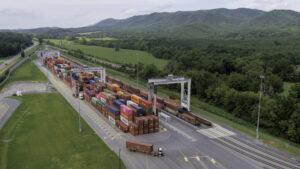
In Fiscal Year 2022 (ending June 30), GPA will spend $485 million on capital projects. Over the next 12 years, GPA will invest a total of $4.5 billion in infrastructure.
AI: Will you be able to handle the importation of the raw materials needed by gigafactories?
Lynch: Yes.
AI: Are there plans for infrastructure to support EV imports and exports through Brunswick?
Lynch: Colonel’s Island Terminal in Brunswick already includes infrastructure to accommodate electric vehicles.
The Georgia Ports Authority is working with its partners in Brunswick, including auto processors and OEMs, to ensure the expansion of that infrastructure as needed.

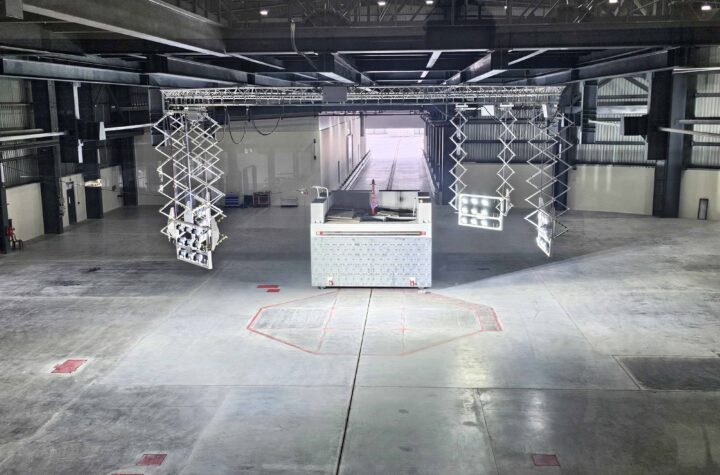
More Stories
Cybord warns of dangers of the stability illusion
Automotive Industries interviews Bahar Sadeghi, Technical Director, Car Connectivity Consortium (CCC)
Hexagon’s MAESTRO reinvents CMM systems through digitization